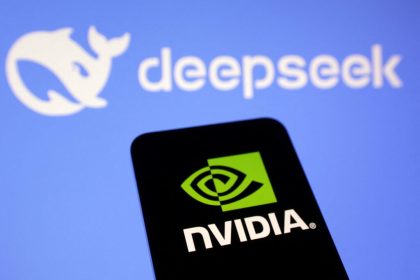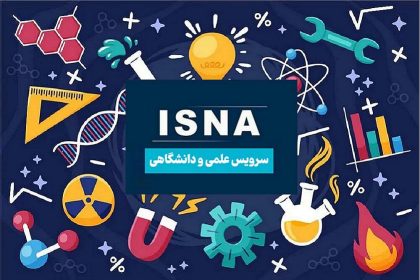The image produced by artificial intelligence has components that can be informed through several methods. In this article, we are going to introduce four solutions to identify the image produced by artificial intelligence.
Are you viewing an image generated by artificial intelligence? Answering this question at the present time is a very difficult task; Because many artificial intelligences such as Dal-e, Midjourney and Stable Diffusion can easily produce unique images. However, just as Photoshop-edited photos can be identified in a variety of ways, there are also solutions for recognizing AI-generated images. In this article, we explain four methods.
1. Check title, description, comments and tags
Currently, there is no legal prohibition for the use of artificial intelligence in order to produce images. However, AI-generated images usually have information in their captions or descriptions.
Another good section that can be analyzed is the comments section. For example, in the images above, a command line is used to generate an artwork.
Apart from the title, description and comments section, you can also visit the images profile page to check for clues. Naturally, seeing the words Midjourney or DALL-E, which are two famous names of artificial intelligence producing artistic images, ends the argument that the images were created by artificial intelligence.

Some online art communities, such as DeviantArt, group AI-based images into a separate category called AI art. By browsing these types of sites, you can check the tags posted by the authors or owners to check if the images are artificial.
If you have seen images on social networks, you can make sure that the images are fake by looking at the hashtags.
2. Find the watermark

Another clue to identify an image produced by artificial intelligence is to check the watermarks that the artificial intelligence produces after creating and publishing the images. For example, DALL-E 2 artificial intelligence puts a watermark on all the images you download from the site. However, this watermark may not be very obvious in the first place. For example, can you find the watermark on the image above?

You can see the Dal-E watermark in the lower right corner of the image. The desired watermark is engraved on the image in the form of five colored circles. If you see this watermark on an image, it is definitely created by artificial intelligence.

However, it is interesting to know that it is extremely easy to download the same photos above without watermark. What is more interesting is that downloading artificial intelligence images without watermark is not against the rules of OpenAI. Therefore, as long as you do not mislead others as to the nature of the images, there is no legal prohibition against downloading images without watermarks. For example, if you credit or sell AI images, this practice is against OpenAI rules and will be prosecuted in the international community.
On the other hand, Midjourney’s artificial intelligence has not used the watermark in any way, and it is entirely up to the user to decide whether the images created by Midjourney are artificial.
3. Artificial intelligence distortion in images

You may not notice any distortion or change in the AI images at first, but if you look at the AI images more closely, some signs of the image seem strange. For example, in the picture above you can see several dogs sitting around a dining table, but with a closer look you can see that some of the dogs’ eyes are missing. Also, the faces of some dogs are out of their normal and natural state.

This work that you are watching is similar to impressionist style paintings that consist of short colored lines. If you want to look at the picture from a distance, you may not notice many flaws, but you will find the power to come across more details about this painting by watching closely. This problem is not only limited to animals, and human images produced by artificial intelligence also have defects.


For example, hold the image above, which was created by artificial intelligence and downloaded from the website This Person Does Not Exist. Have you noticed anything strange? At first glance, everyone may think that this picture belongs to a person, but with a closer look, you will notice that on one eye of the person, the glasses are clearly present, and on the other eye, the glasses are hardly visible. It seems that the right part of the glasses is combined with the person’s skin.
Despite the fact that such flaws are likely to be overcome with the advancement of artificial intelligence technology, it is still funny why artificial intelligences cannot produce images of human hands without flaws.

Usually, hand images produced by artificial intelligence have extra fingers. However, generating correct images around the angle of the hands or how the hand interacts with other subjects is still challenging for artificial intelligence. In any case, hand images produced by artificial intelligence are highly unnatural.
When it comes to real human images, there are a few other AI-related signs to look for:
- Missing or mismatched earrings
- A faded background that looks more like a texture
- Text in the background is unrecognizable or useless
- Asymmetry of facial features (for example, the teeth are off-center or the eyes are different in size)
- Different parts of the photo look as if they were painted
- Objects such as glasses or earrings blend with the skin of the human body
- The hands contain more fingers or look abnormal

Even though we now know the different signs of artificial intelligence, it is still very difficult to identify fake images from the real ones.
4. Using an artificial intelligence image recognizer
Some users take help of tools without any delay to get quick results. For example, Optic company provides tools on the web to identify the image produced by artificial intelligence.
The AI or Not website tool will help you upload an image to the site very quickly and then find out if the image is created by artificial intelligence or not. The website claims to be able to identify images from today’s powerful AIs such as Midjourney, Dal-e and Stable Diffusion.

This tool is not opened with Iran IP and you must use the sanctions bypass tool in order to use the features of the program. This tool has performed better than other programs tested by us. However, the analyzes on this website can also be wrong.

Since the results obtained by these websites can be unreliable, combining this method with other solutions that we have described in this article can be considered a good option to identify the image produced by artificial intelligence.
With all these interpretations, we can hope that artificial intelligence detection tools will make significant progress in the future. For example, we can mention the DeepFake detection tool released by Microsoft, which was praised by many experts at the time of its release, but it has major flaws. However, optimizing these software will take time.
What do we expect from the future?
Without a doubt, AIs will continue to improve dramatically over the coming years, and we will surely reach a time when images created by AI will look extremely realistic and flawless. If we reach this point of time, it is probably not possible to understand the artificiality of the images just by examining the unnatural visual elements.
We hope that as artificial intelligence advances, artificial intelligence identifiers will also be much stronger. At least users can check the images on the site and programs to make sure that the images are fake. With all these interpretations, OpenAI recommends that we be honest with each other about these types of images.
The images made by artificial intelligence will get better over time and probably in the future we will need an elite team to identify fake images. Having said that, in the current article, it is tried to present the current solutions to increase the awareness of users. You can always use artificial intelligence image recognizers but keep in mind that even these tools can mislead you by giving false results.
Source: makeuseof
Common questions and answers
What are the artificial intelligences that create images?
Midjourney and Dal-E are two of the most famous artificial intelligences that create images.
How to identify the difference between artificial intelligence images and real images?
The AI or Not website tool will help you upload an image to the site very quickly and then find out if the image is created by artificial intelligence or not.
Are artificial intelligence image tracking sites also wrong?
Undoubtedly, these sites can be misdiagnosed.
RCO NEWS
















